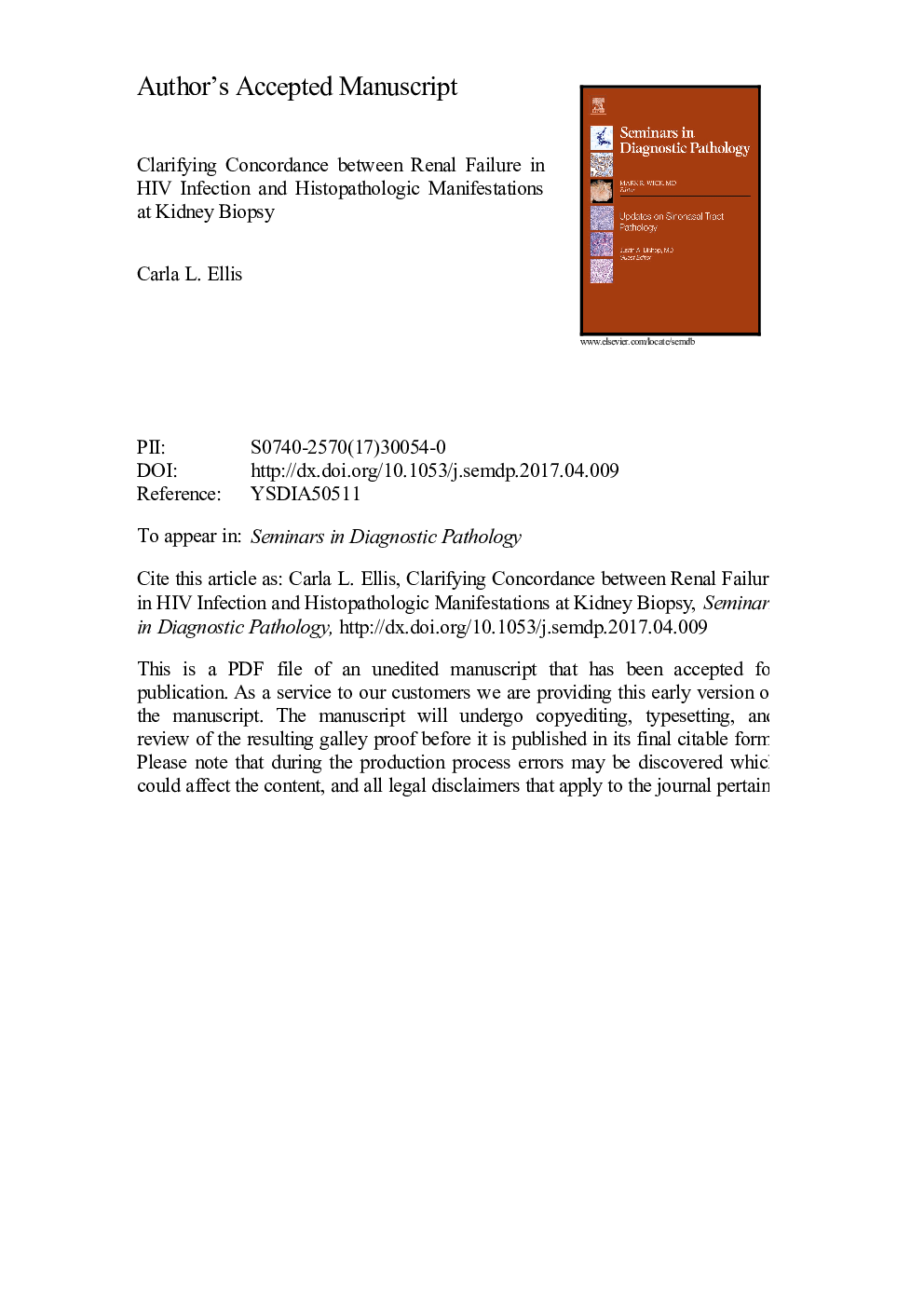| Article ID | Journal | Published Year | Pages | File Type |
|---|---|---|---|---|
| 5716678 | Seminars in Diagnostic Pathology | 2017 | 19 Pages |
Abstract
Patients with HIV infection have a wide spectrum of renal diseases. Some are known to be the direct effect of the viral infection while others are renal diseases that also occur in uninfected populations. HIV associated nephropathy (HIVAN) is considered to be a subtype of primary focal and segmental glomerulosclerosis that is distinct in HIV infected patients. It is more frequent in the African-American population and associated with mutations of the apolipoprotein L1 (APOL1) gene. HIV associated immune complex kidney disease (HIVICD) encompasses a spectrum of HIV associated renal diseases characterized by the presence of immune complex deposition within glomeruli. Thrombotic microangiopathy (TMA) is a complication of HIV infection that presents with hemolytic anemia, thrombocytopenia, and renal failure. TMA in HIV patients is associated with very high mortality. Lastly, the multitude of antiretroviral drugs used for treatment of HIV infections can result in nephrotoxicity. Although a kidney biopsy may not be the first line study for renal disease, knowledge of the different histopathologic features of HIV-associated and unassociated diseases is of paramount importance in the treatment and subsequent outcome of renal function in HIV infected patients. In this review we will describe the histopathologic features and discuss the pathophysiology of the entities previously named.
Related Topics
Health Sciences
Medicine and Dentistry
Pathology and Medical Technology
Authors
Carla L. Ellis,
